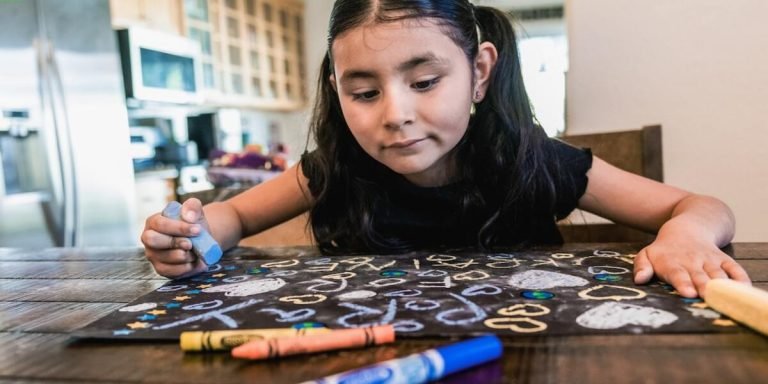Levels of Reading Comprehension: An Insight into Child Literacy Development
Understanding the “levels of reading comprehension” is a fundamental aspect of child literacy development. As young learners grow, their ability to comprehend and interpret text evolves in stages or levels that are reflective of cognitive maturity. This process forms the bedrock for continued learning and accumulation of knowledge – thereby setting educational milestones.
However, observing these nuances can be quite challenging especially while homeschooling your child. It’s not just about exposure to words but also about decoding meaning, forming associations, drawing inferences – all integral parts within different levels of reading comprehension. Hence guiding oneself through this labyrinth becomes vital when building an effective home-based curriculum aimed at enhancing linguistics skills effectively.
Did you know?
Fact: According to a study conducted by the U.S. Department of Education, children who are read to at home enjoy a substantial advantage in vocabulary and comprehension over their peers who aren’t exposed to reading until school age.
Understanding Levels of Reading Comprehension in Home Schooling
In the realm of home schooling, reading comprehension is an essential component that should not be underestimated. It’s not merely about recognizing words or fluently reciting texts; it delves much deeper into understanding and interpreting what each word, sentence, anecdote conveys in a story or passage. The process of learning to read encompasses multiple levels of comprehension which can significantly impact your child’s educational journey.
Recognizing these levels becomes particularly crucial for parents who have chosen to educate their children at home because they often serve as both teacher and parent simultaneously. Being aware of these different stages will allow them to tailor teaching methods according to their child’s unique needs and progress better. By gaining knowledge on this topic, they are equipped with tools needed for more effective communication regarding academic expectations resulting in enhanced performance from youngsters.
Analyzing the Four Stages: Decoding, Fluency, Vocabulary, and Text Comprehension
In the realm of home education and notably in developing a child’s reading skills, understanding the different levels of reading comprehension is crucial. Especially now in 2023, with digital distractions at an all-time high, fostering strong literacy abilities can pave the way for academic success.
Let’s delve into analyzing the four integral stages – Decoding, Fluency, Vocabulary and Text Comprehension – each representing diverse facets within the spectrum of ‘levels of reading comprehension’.
Next up comes fluency; this stage focuses on children being able to read quickly without stumbling or pausing too much. Encouraging regular practice by introducing engaging books suitable for their age range will help develop fluidity over time allowing your child to be more expressive while they read aloud.
Vocabulary development forms another critical component here– expanding one’s word bank equips them better not just in spellings but also bolstering their cognitive capabilities overall. Incorporating ancillary teaching tools like crossword puzzles or simply utilizing everyday objects around us are proven techniques parents could adopt during homeschooling sessions.
Tailoring Instructional Strategies to Each Student’s Comprehension Level
The levels of reading comprehension can vary greatly from one home-schooled child to another. As such, it’s crucial for parents and educators to tailor their instructional strategies according to each student’s unique level of comprehension.
Firstly, understanding the different stages is paramount in customizing your teaching methodology. There are primarily three levels of reading comprehension: Literal Comprehension (direct understanding), Inferential Comprehension (interpretation based learning) and Evaluative Comprehension (critical thinking). Each stage builds upon the other; therefore, recognizing where a child stands on this continuum will guide you in creating appropriate lesson plans that cater specifically to them.
Let’s now focus on some effective educational practices tailored for these diverse levels:
For literal readers who’re just beginning their journey into literacy–focus should be laid more towards familiarizing the students with basic language skills. Use simple written materials initially like picture books or short stories which allow children grasp direct information through illustrations coupled with sentences aiding memory while boosting vocabulary simultaneously.
On reaching inferential state as they grow older—the introduction of complex texts aids in encouraging cognitive abilities—encouraging them to interpret storylines whilst honing analytical skills goes a long way here! A fun approach would be transitioning gradually—from graphic novels progressing onto chapter books fostering an environment which entices curiosity stimulating creativity!
Cultivating Advanced Reading Skills in a Home Education Environment
In the digital age, encouraging advanced reading skills in a home education environment is paramount. Strong reading comprehension forms an integral part of all academic subjects and not only broadens children’s understanding but fosters their curiosity about the world around them. It equips learners with tools that help them infer meaning, analyze text critically and encourage creative thinking –all crucial for competitive modern-day lifestyles.
Maintaining focus on “levels of reading comprehension,” it’s important to recognize this involves literal understanding, interpretation based activities along with critical analysis and evaluation tactics – inclusive aspects we generally associate with hi-level intellectual engagement. In a homeschooling setup, parents can integrate these levels seamlessly into everyday learning scenarios making lessons relatable while also building improved cognitive acuity among kids.
A well-rounded approach towards incorporating different levels of comprehension within home-based curriculums could involve stimulating activities such as context-driven story-telling sessions or open-ended discussions post readings as simple starting points. These can be gradually elaborated by introducing complex thematic vocabularies or cross-questioning styles allowing young minds to actively participate more than passively receive information thus enhancing retention rates significantly higher over time.
While cultivating advanced reading skills might seem like an uphill task initially for many homeschooling educators, breaking it down into tangible steps makes the process both effective and fun-filled!
Incorporating Critical Thinking and Analysis into Lesson Plans
As a home educator in 2023, it’s fundamental to incorporate critical thinking and analysis into your lesson plans. This helps not only enhance the levels of reading comprehension but also equips children with vital skills for future learning endeavors.
Begin by creating an initiating environment that encourages questioning. Instead of simply having your child read texts passively, provoke them to ask their own ‘why’ or ‘how’ questions about what they have just gleaned from their reading exercise.
Another notable way is through interactive story-telling activities. As you engage your child in a lively narrative session, trigger them to answer thought-inspiring questions related to the characters and events within the tale.
Additionally, make use of daily occurrences as teaching tools. Encouraging kids to extrapolate information or lessons from everyday interactions can significantly ameliorate levels of reading comprehension over time.
Utilizing Technology and Multimedia Resources for Interactive Learning
In the ongoing digital age, a crucial aspect of home education is learning how to utilize technology and multimedia resources for interactive learning. This not only effectively engages young learners but can also catalyze their levels of reading comprehension.
Firstly, eBooks and audiobooks are becoming increasingly popular in children’s early literacy development stages. They offer interactivity that traditional books cannot match- from background music to animated illustrations which turn an otherwise routine reading activity into fun-filled discovery time. These technologically enhanced stories hold youngsters’ interest longer thus encouraging repeated exposures which reinforce vocabulary building and understanding sentence structures.
Next up on our list: educational apps combining game-based activities with targeted skill-building tasks help children learn while they play. Certain ‘Reading Comprehension Apps’, tailored specifically around different ages or ability groups infuse engaging narratives with enquiries or challenges aiming at enhancing emergent readers’ grasp over story plots, key details – all vital components within higher levels of reading comprehension schema.
Online video platforms as YouTube Kids house countless instruction videos making complex concepts simple by using animations, catchy songs or interesting experiments – acting out perfect supplemental tools alongside textbooks teaching advanced lessons enjoyable & memorable way hence aiding quicker retention along more effective learning process at the same point.
Assessment Techniques for Gauging Reading Comprehension at Home
Assessing reading comprehension at home is a crucial part of childhood education, especially in the era where homeschooling is gaining momentum. It allows parents to understand their child’s cognitive capabilities and tailor educational methods that best support growth and learning. The focus typically lies on determining the levels of reading comprehension – this includes an elementary understanding of text, interpretation skills, ability to analyze connections within or outside given context(s) and evaluation based on personal judgment.
Several techniques exist for this purpose, and you can implement them easily without any formal teaching training. For instance:
- Conduct regular ‘Question-Answer’ sessions after readings to gauge how much information the child absorbs.
- Discuss hypothetical scenarios based on stories they’ve read to reflect on real-world implications through literature exposure.
However importantly enough , if there comes a situation where your youngster seems unable to comprehend as expected it’s important not get disheartened instead turning it into another teaching moment explaining different contexts thus enhancing critical thinking while improving content consumption habit over time . As every child learns differently embracing those differences goes long way ensuring growth simultaneously making learning fun experience rather than chore taken up unwillingly.
Designing Effective Evaluations for Homeschooled Students
In the realm of home education, understanding your child’s levels of reading comprehension can be a powerful tool in guiding their learning journey. But, how can you accurately measure this critical skill? Here’s where designing effective evaluations for homeschooled students comes into play.
To begin with, it is essential to understand what we mean by “levels of reading comprehension”. These include literal understanding (facts and details from the text), inferential interpretation (reading between lines), evaluative judgement (forming an opinion about data) and finally creative level (combining facts with imagination).
No changes needed.
1. Literal Understanding: Ask questions directly related to the information given in the paragraph or story read.
3.Probe Evaluative Judgement like ‘Do you agree with…? Why or why not?
4.Encourage Creative application asking them how they would end/rewrite part of a storyline based on new generated ideas .
Additionally, open-ended discussions after every reading assignment are incredibly beneficial too; they promote exploration beyond textual boundaries and ignite creativity whilst keeping focus intact on comprehensive abilities . Pay attention to any struggle faced during exchange revealing areas needing reinforcement .
Interpreting Results to Enhance Individualized Educational Pathways
Consider this as an ongoing assessment which involves keen observation and careful evaluation over time. It allows you to accurately determine not only what your child is absorbing from their readings but also how they’re thinking critically about material.
Firstly, observe if your child can recall details from a story book or an article they’ve recently read – characters’ names, plot points and settings etcetera are good starting pointers for younger kids while theme analysis holds centrality in case of older ones.
Secondly another level involves evaluating whether children make logical connections between different pieces of information within the text—something known as inferential comprehension. Are students able to ‘read between lines’, so to speak?
The uppermost level though requires analytical skills: it includes forming opinions based on multiple texts; critical comparison and drawing conclusions drawn out after synthesis often forms part thereof.
Once having assessed where exactly does our ward stands in terms with Crystallized levels mentioned here we cannot simply stop by determining same rather parents need then use that knowledge—as well educators —to tailor educational strategies towards marked improvement areas.
Remember learning should always be seen through individualistic perspectives because every kid harbors unique potential each differing quite starkly compared others hence ‘one size fits all’ delivery won’t work expectantly.
Conclusion
In wrapping up, understanding levels of reading comprehension is not just an educational milestone but a key that unlocks the world for your child. As they advance through these stages, with support and encouragement from parents and educators alike, children gain more than literacy; they acquire tools to explore knowledge independently.
Dive deeper into our rich reservoir of resources tailored for childhood education. If you seek advice on teaching techniques or want to find educator support forums, we have something just for you. Thank you for joining us on this journey to foster effective learning environments shaped by keen insights like ‘Levels of Reading Comprehension‘.







